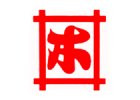Nostalgic Japanese cuisine
Traditional Japanese kitchen knives that bring a touch of nostalgia and masterful craftsmanship. The blade is made of popular material Gin-san (Silver 3)which is a high quality carbon steel from the alloy series Yasuki steel. This HRC 60 hardness steel is characterised by its excellent sharpness, easy sharpening and long service life, which will be appreciated by both professional chefs and home cooking enthusiasts.
The surface of the blade is decorated with a traditional Nashiji pattern that resembles the rustic texture of a pear skin, giving the knife an authentic retro look inspired by Japanese design of decades past. This finish not only enhances the aesthetics of the knife, but also reduces the adhesion of food to the blade.
The handle is made of wengé wood, known for its high hardness, durability and natural patina. Thanks to its octagonal shape, it fits perfectly in the hand and provides a firm, comfortable grip for maximum control when slicing. It is symmetrically shaped, which means that the knife is suitable for both right and left-handed users.
#showmore#
Nashiji (梨地) - Traditional Japanese blade finish
Nashiji (梨地), literally translated as "pear skin", is a traditional Japanese blade finish that resembles the fine, irregular texture of a pear skin. This rustic and matt look is particularly applicable to kitchen knives, where it offers practical advantages in addition to its aesthetic value.
How does Nashiji affect knife functionality?
🔹 Reduces food adhesion - Thanks to the fine-coarse texture of the blade, sliced ingredients stick less to the surface of the knife, making it easier to cut smoothly and accurately.
🔹 Traditional handcrafting - The Nashiji pattern is usually applied by hand, enhancing the uniqueness of each knife.
🔹 Retro aesthetic - Knives with this finish have a rustic, nostalgic look inspired by Japanese craftsmanship.
🔹 Minimizes the visibility of scratches - Nashiji's surface helps mask minor wear and tear and signs of use, maintaining the aesthetics of the knife for longer.
How is Nashiji created?
The Nashiji surface is created through a special forging and etching process. Cutters use fine sandblasting or acid etching to create an uneven texture on the surface of the blade. This method has historically been used in the production of Japanese swords and is now widely used in premium kitchen knives.
Why choose a knife with Nashiji finish?
✅ Authentic Japanese design - Combines traditional craftsmanship techniques with modern functionality.
✅ Practical surface treatment - Makes work easier due to less food adhesion.
✅ Long lasting appearance - Hides minor signs of wear and maintains the aesthetics of the knife.
Summary: Nashiji is a traditional Japanese blade finish that combines an elegant rustic look with practical functionality - perfect for anyone who appreciates the authentic design and high performance of Japanese knives.































































